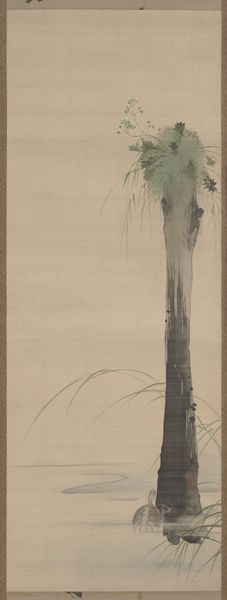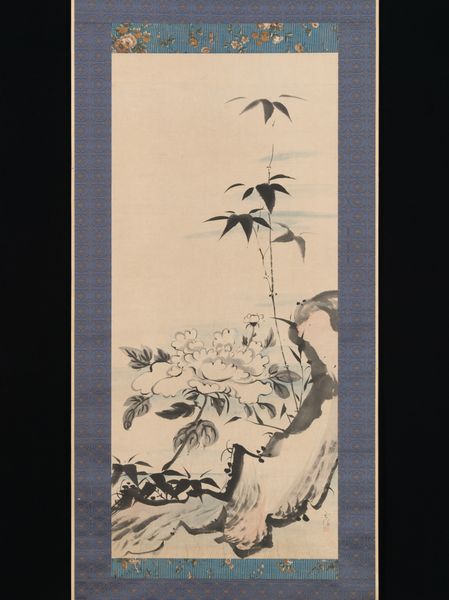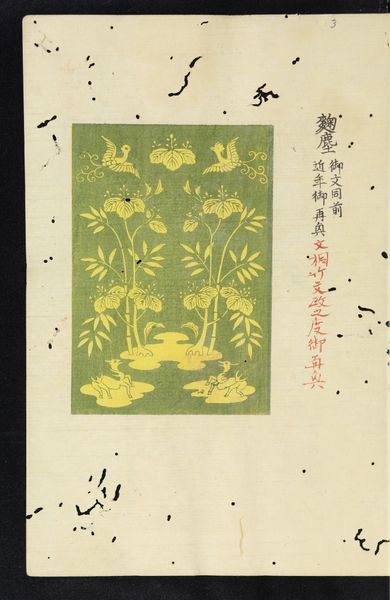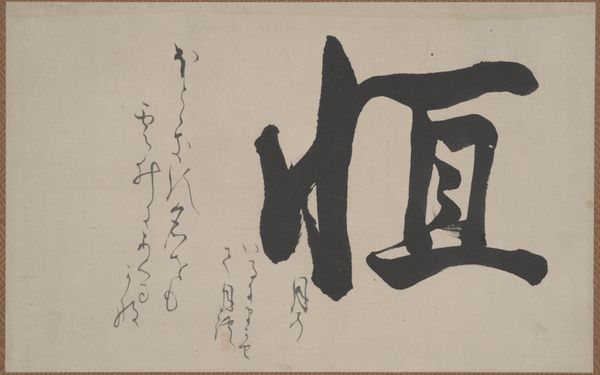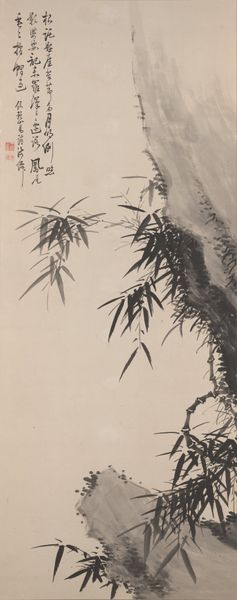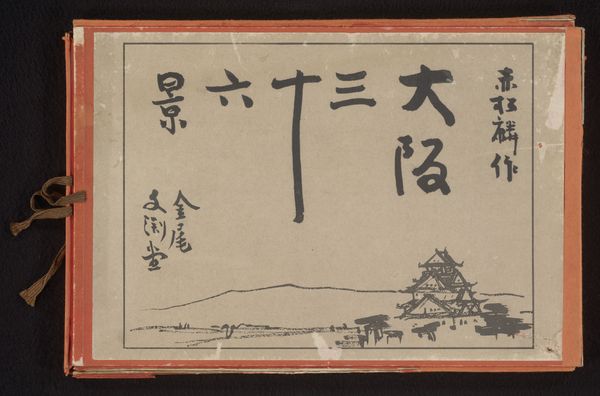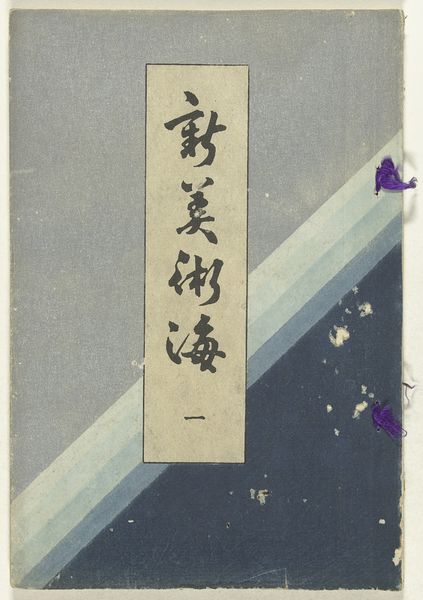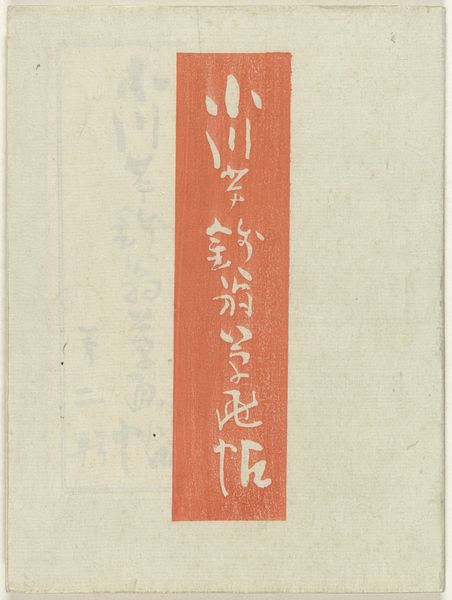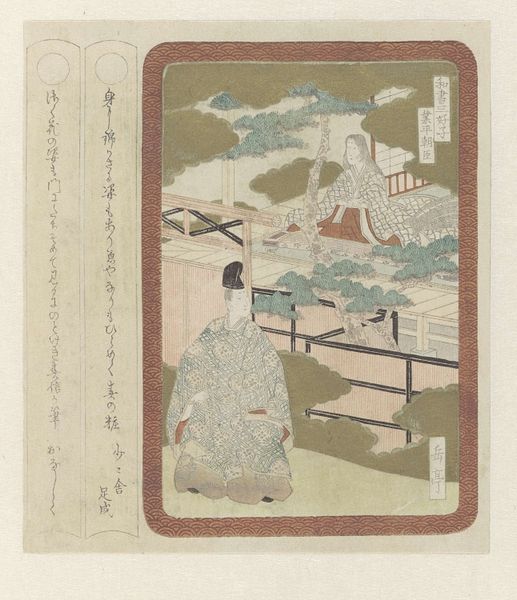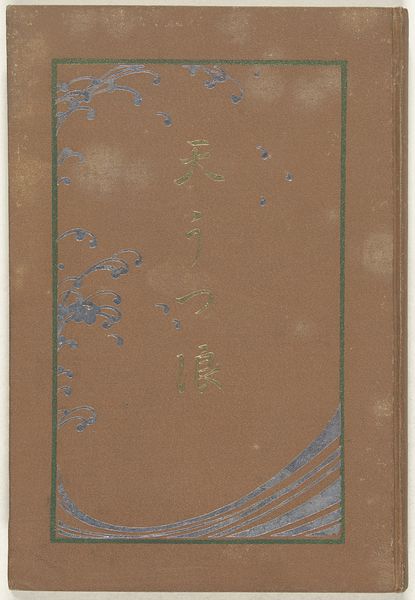
print, woodblock-print
# print
#
asian-art
#
landscape
#
woodblock-print
Dimensions: height 227 mm, width 153 mm
Copyright: Rijks Museum: Open Domain
Curator: This lovely woodblock print, created by Shimomura Izan around 1910 or 1911, is titled "Januari 1910". It's currently housed right here in the Rijksmuseum. Editor: There's such a peacefulness to it. The limited palette of blues and creams creates this sort of twilight tranquility. Those stylized waves almost lull you into a dream. Curator: Dreamlike is a good descriptor. Izan was working during a period where Japanese artists were consciously trying to bridge traditional techniques with Western aesthetics and its distribution networks. Prints, affordable and easily reproduced, allowed for wider circulation of art ideas among the middle classes. Editor: And palms often symbolize rest and eternity. I’m fascinated by the graphic representation of those palms. Are we really looking at the exotic tropics, or perhaps something far closer to home rendered in a deliberately evocative way? Curator: That’s the interesting ambiguity. It highlights the increasing internationalism and awareness of the world through mass media, where images of far off places influenced a yearning for escape or different possibilities for urban inhabitants. The use of Japanese techniques allowed also to reassert a specific artistic tradition and national identity that wasn't explicitly Western. Editor: Right. The symbols exist both as objects and also carry cultural values within specific social contexts. How were landscapes and especially these kinds of natural scenes received at the time? What values were they attached to, considering wider socio-political context in which Japanese identity was also being redefined? Curator: At this time, a growing sense of Japanese nationalism emphasized uniqueness but also adaptation in face of rising imperialism and modernity. Landscape scenes, traditionally important, acquired renewed significance, especially landscapes infused with a sense of the foreign, becoming sites for negotiating these complex values and desires through tourism and visual culture. Editor: That tension—between local and global, traditional and modern—is so palpable in its simplified design, wouldn't you say? Even those stylized waves hint to a certain exotic, tropical place, and are open for further subjective interpretations. Curator: Exactly. Izan’s work exemplifies the complexities in turn-of-the-century Japanese visual culture. Editor: What began as a simple appreciation of this dreamy composition has turned into quite a journey into cultural meanings! Curator: That's the beauty of art; it takes us places, both physical and intellectual!
Comments
No comments
Be the first to comment and join the conversation on the ultimate creative platform.
